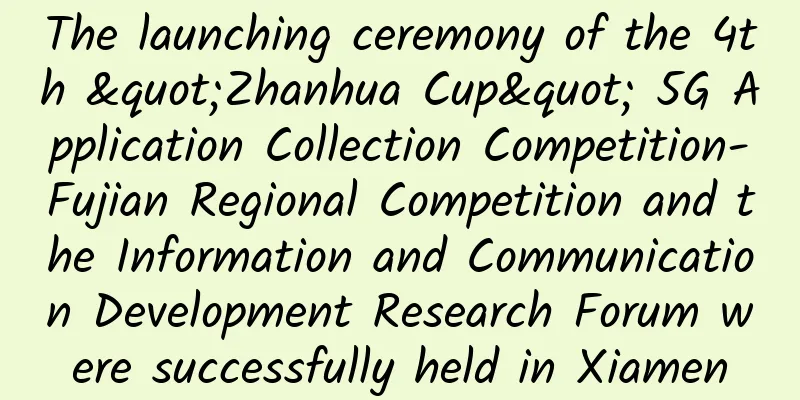After the fourth retail revolution, three experts from WOT tell you what real smart retail is!

|
[51CTO.com original article] On June 21, the WOT2019 Global Artificial Intelligence Technology Summit kicked off on time at the Beijing Yuecai JW Marriott Hotel. As a well-known summit for offline exchanges among global technical personnel in 2019, this conference focused on three core chapters: general technology, application fields, and enterprise empowerment. More than 60 first-line AI experts from around the world gathered together to share thematic technical content such as deep learning, neural networks, visual technology, unmanned driving, machine learning, algorithm models, and knowledge graphs with more than a thousand participants. On the morning of June 22, in the smart retail forum of the C venue in the application field chapter, three cutting-edge application experts, WakeData co-founder Dang Haixin, MobTech data science vice president Fang Zhen, and former JD Group Technology Development Department Director Yang Haiming, were invited to attend and give wonderful speeches. After the meeting, 51CTO organized the experts' speeches into articles, hoping that the essence of their speeches will be helpful to everyone. WakeData co-founder Dang Haixin: Awakening dormant data Dang Haixin believes that the essence of customer management is traffic management, which will bring about four major trends: first, decentralization; second, more use of big data to make decisions and insights in the retail industry's people, goods, and places; third, improving efficiency. The retail industry hopes to increase customer unit price and repurchase rate by operating traffic, and ultimately increase revenue; fourth, the concept of capital appreciation will receive more attention, and the exploration of user ARUP value will be more in-depth. So how to do a good job in customer management? Dang Haixin pointed out that big data is the necessary technical core of customer management, and he also shared the architecture of Weike Data's customer management big data. First of all, retail companies can build data models. The company's own data is far from enough and needs to be supplemented from third parties. Then let offline traditional companies have data capabilities equivalent to global traffic. Global traffic refers to Toutiao, Douyin, Weibo, WeChat, etc. Then these data capabilities will drive the retail company's own traffic, such as WeChat, e-commerce and offline stores, so that retail companies can quickly find users on global media and empower marketing activities and tools. In his speech, Dang Haixin emphasized that offline systems are isolated information islands that are separated from each other. Only through a complete system can a person's behavior cycle be covered. A simple method is to identify all shopping behaviors of a person through a mobile phone number, or to match the user's ID or MAC address through an algorithm. Another more effective method is to tag the user. "When all data assets are accumulated, retail companies can build global traffic and cover all groups of people who need to expand their products. Of course, marketing methods will also change accordingly, with more gameplay and online push methods." He concluded. Fang Zhen, Vice President of Data Science at MobTech: Performance Marketing with Semi-Supervised Lookalike Based on Innovative Algorithms Fang Zhen introduced at the beginning that MobTech has done a lot of research on innovative algorithms in retail marketing scenarios to help customers improve efficiency. In her speech, she said that Lookalike (similar population expansion refers to finding similar audiences based on seed user portraits and social relationship chains through open and rich data capabilities) has a characteristic, that is, there are only positive samples, and the magnitude is relatively small. When using classification models to handle Lookalike business, the biggest problem is the acquisition of negative samples. The traditional approach is simple and crude, mainly random selection, relying on the high probability of negative sample events occurring under natural conditions. MobTech is different. They use the Positive-Unlabelled Learning algorithm. Instead of random selection, they use some characteristics of positive samples to find more reliable negative samples. The final model can improve the effect by 2%~5%. According to Fang Zhen, the newly developed algorithm, after local testing and historical data testing, will eventually be put into production environment for testing. So how to allocate test traffic? MobTech introduced MAB (Multi-Armed Bandit) in the marketing system to perform automatic optimization to minimize opportunity costs. Specifically, MobTech first randomly selects a small part of the traffic (such as 5%) and allocates it to the new model for testing; secondly, after one stage, the effects of the new model and the old model are counted to obtain the beta (α, β) distribution of the two respectively; then, based on the beta distribution of the two, the traffic ratio of the two in the next stage is calculated; finally, the traffic is allocated according to the ratio obtained in step 3, and the cycle returns to step 2 until the end of the test. Speech *** Fang Zhen shared the value of the MobTech algorithm: From May 2018 to June 2019, data from Lookalike's deployment in the gaming industry showed that the conversion rate of ordinary users increased to 0.05% after three months of use; when users upgraded the product to PU Learning and used it for half a year, the conversion rate was as high as 0.11%; after upgrading the product to AUC+MAB again, the conversion rate reached 0.29% in just three months, with significant results. Yang Haiming, former head of JD.com's Technology Development Department: Smart Middle Platform under New Retail Yang Haiming said at the beginning that after four retail revolutions, from department stores to e-commerce digital platforms, the essence of retail has not changed. It is still about cost, efficiency, and experience. The core of the upgrade lies in the transformation of retail infrastructure. He said that retail infrastructure mainly refers to the public infrastructure that serves information, goods, and capital flows. Today, between the 3I (Instrumented, Interconnected, Intelligent) of backend technology and the 3P (Pluralistic, Personalized, Participative) of consumer portals, there is a retail middle platform 3S (Scalable, Smart, Synergetic), which provides services such as business flow, information flow, and capital flow. He told the audience that the retail infrastructure platform can build and consolidate infrastructure, focusing on the core competitive advantage of "smart supply chain" to comprehensively improve three intelligences: smart consumption, smart supply, and smart logistics. Not only that, the retail infrastructure platform can also empower external parties - open up technical capabilities to improve the performance of retailers, brands, and other partners, and contribute value to ecological construction. It connects internal capabilities with external capabilities and can build a platform with external ecological partners. What specific value can the retail infrastructure middle platform bring? Yang Haiming said that the retail infrastructure middle platform can help retail managers make decisions, such as which products should be increased in price? Which products should be reduced in price? Which products should be promoted? Which products should not be promoted? Different pricing strategies are recommended based on different product categories. Achieve the best price efficiency and promote transactions. The results of the automatic pricing test show that the total GMV transaction amount increased by 3.6% and the gross profit increased by 19.0%. "Today, big data is no longer just a concept. All important decisions of enterprises need to be supported by data." Yang Haiming believes that customer insights, market insights and operational insights can be achieved through data analysis platforms: in terms of customer insights, by capturing and analyzing customer-related behavioral data, developing predictive analysis models, and achieving user portraits and precision marketing. In terms of market insights and operational insights, by analyzing historical data and operational data, service quality can be improved and new market opportunities can be found. The above content is compiled by 51CTO reporters based on the speech content of the "Smart Retail" sub-forum of the WOT2019 Global Artificial Intelligence Technology Summit. For more complete WOT content, please pay attention to .com. [51CTO original article, please indicate the original author and source as 51CTO.com when reprinting on partner sites] |
>>: AIOps implementation revealed! See how three WOT experts make AIOps a reality
Recommend
LOCVPS: Hong Kong Cloud/Los Angeles Light Package is online, KVM monthly payment starts at 29.6 yuan
LOCVPS is a long-established Chinese VPS service ...
DesiVPS: Los Angeles 1Gbps unlimited traffic VPS from $18.99 per year, Netherlands VPS from $20 per year
DesiVPS's latest promotion is similar to the ...
It is easy to raise a sail in the river, but it is difficult to sail against the current - Huawei is making full efforts in the public cloud 2.0 era
[51CTO.com original article] Recently, Huawei and...
Yecao Cloud: Hong Kong cloud server/VPS annual payment starts from 138 yuan, dedicated server starts from 299 yuan/month, BGP or CN2 line
Yecaoyun is a Chinese hosting company founded in ...
From the road to practice, Huawei is on the top of the storm
At present, all industries are accelerating into ...
What can I do with 5G network?
Some people say that 4G is enough and there is no...
LOCVPS Hong Kong Cloud/Confederation bandwidth upgrade is free of charge, top up 350 yuan and get 50 yuan, 20% off for the whole site
LOCVPS is a long-established Chinese VPS service ...
Best Practices for Stream Computing Processing with Flink on Zeppelin
Content framework: Big Data Overview Flink Learni...
Seven steps to SD-WAN deployment
The benefits of software-defined WANs are appeali...
Friendhosting 15th Anniversary Promotion: 40% off all VPS, starting from €1.8/month in 13 data centers in the United States, the Netherlands, Japan, etc.
Friendhosting released a promotional email titled...
Digital Stargazing joins hands with Gu'an Tianxia and Yunti to launch new products to explore the value of security services with big data
[Original article from 51CTO.com] On November 29t...
[Black Friday] DediPath VPS Hosting 50% Off, 1Gbps Unlimited Dedicated Server Starting at $45/month
DediPath is a foreign VPS service provider founde...
Europe lags behind in 5G rollout, study shows
According to an assessment report released by the...









